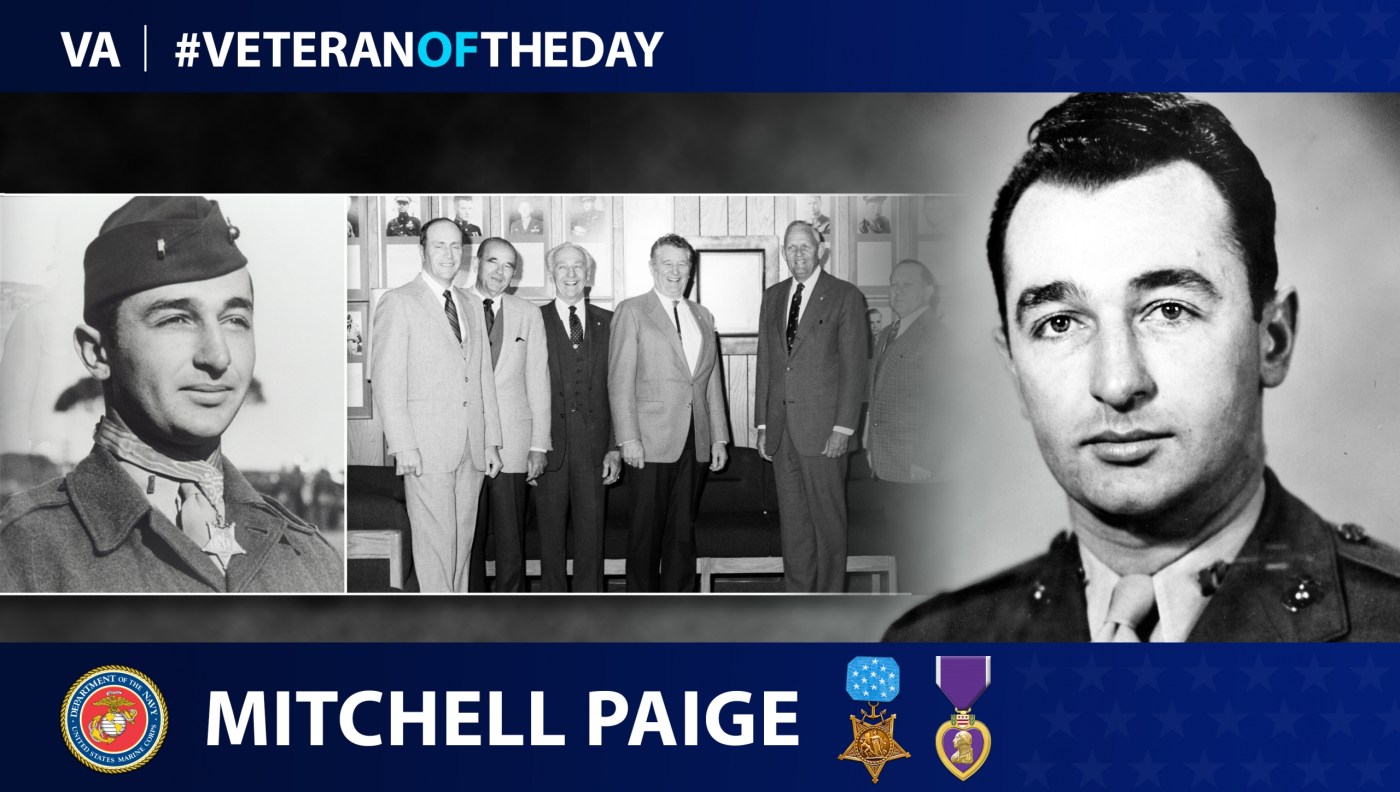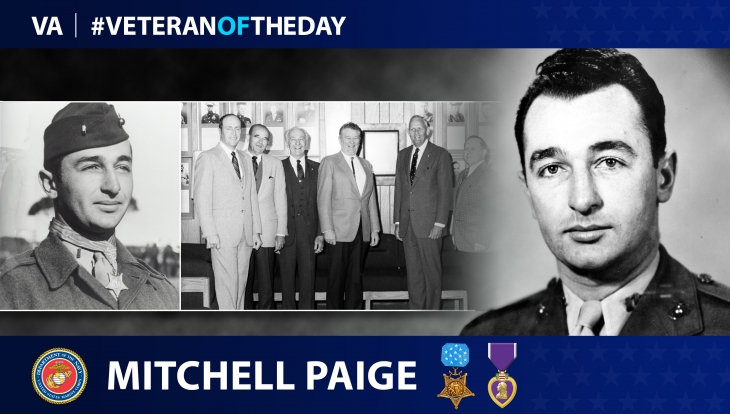Mitchell Paige was born in Charleroi, Pennsylvania, in August 1918. As a boy, Paige saw a group of Marines marching in an Armistice Day parade and decided that he wanted to join the military when he grew up. In 1936, at age 17, he walked and hitchhiked the 200 miles from his home in Pennsylvania to the nearest Marine Corps recruiting station in Baltimore, Maryland. Recruiters told him that he was too young and underweight to enlist. He returned two months later on his 18th birthday, eating bananas and drinking glasses of water until he met the Corps’ minimum weight.
Paige completed basic training at Parris Island in South Carolina. During the 1930s, he served aboard USS Wyoming and was stationed at numerous overseas posts. In 1941, he reported to New River, North Carolina, to help build the facility that later became Marine Corps Base Camp Lejeune. After the Japanese attack on Pearl Harbor, Paige deployed with Company H, 2nd Battalion, 7th Marines to British Samoa, landing at Guadalcanal in September 1942.
On Oct. 26, 1942, while defending an airfield, Paige’s platoon of 33 Marines was attacked by a force of over 2,000 Japanese troops. The Marines engaged the enemy with a combination of machine gun fire and hand-to-hand fighting. Paige, the platoon sergeant and an experienced machine gunner, took aim at the advancing enemy and directed fire from other gunners. When his weapon was damaged, Paige quickly moved to another. During the night-long battle, he ran from gun to gun, dodging bullets and grenades, even after being stabbed in the hand with a bayonet and wounded by shrapnel.
“For a while, it seemed like the whole Japanese army was shooting at me,” Paige said in a 1992 interview.
After reinforcements arrived, Paige led a bayonet charge that prevented the Japanese troops from breaking through American lines. When the battle was over, half of the attacking Japanese soldiers had been killed. For his actions, Paige received a Medal of Honor and a field commission to second lieutenant. He could have returned to the United States; instead, he placed the medal in a cigar box, shipped it home to his parents and returned to combat.
“This Medal of Honor belongs to 33 people,” Paige said. “The greatest heroes were those guys who didn’t survive.”
Paige retired from the Marine Corps in 1959 with the rank of colonel. In his later years, he became the liaison officer for the Congressional Medal of Honor Society, working with the Federal Bureau of Investigation to identify those who falsely claimed to have received a Medal of Honor; it is a federal crime to do so. In 1998, toy company Hasbro created a “G.I. Joe” action figure based on Paige. In addition to a Medal of Honor, he also received a Purple Heart, a Presidential Unit Citation, a Good Conduct Medal, a World War II Victory Medal, a National Defense Service Medal and a United Nations Service Medal.
Paige died on Nov. 15, 2003. He was 85.
We honor his service.
Nominate a Veteran for #VeteranOfTheDay
Do you want to light up the face of a special Veteran? Have you been wondering how to tell your Veteran they are special to you? VA’s #VeteranOfTheDay social media feature is an opportunity to highlight your Veteran and his/her service.
It’s easy to nominate a Veteran. Visit our blog post about nominating to learn how to create the best submission.
Writer: Stephen Hill
Editors: Nathaniel Scott, Theresa Lyon
Researcher: Giacomo Ferrari, David Charles Deprez
Graphic artist: Kiki Kelley
Topics in this story
More Stories
This week’s Honoring Veterans Spotlight honors the service of Army Veteran David Bellavia, who received a Medal of Honor from the Iraq War’s deadliest operation, the Second Battle of Fallujah.
This week’s Honoring Veterans Spotlight honors the service of Army Veteran Scotty Hasting, who served in Afghanistan.
This week’s Honoring Veterans Spotlight honors the service of Army Veteran Roy Sheldon, who served in 97th General Hospital in Frankfurt, Germany.








We honor the service of Mitchell Paige.